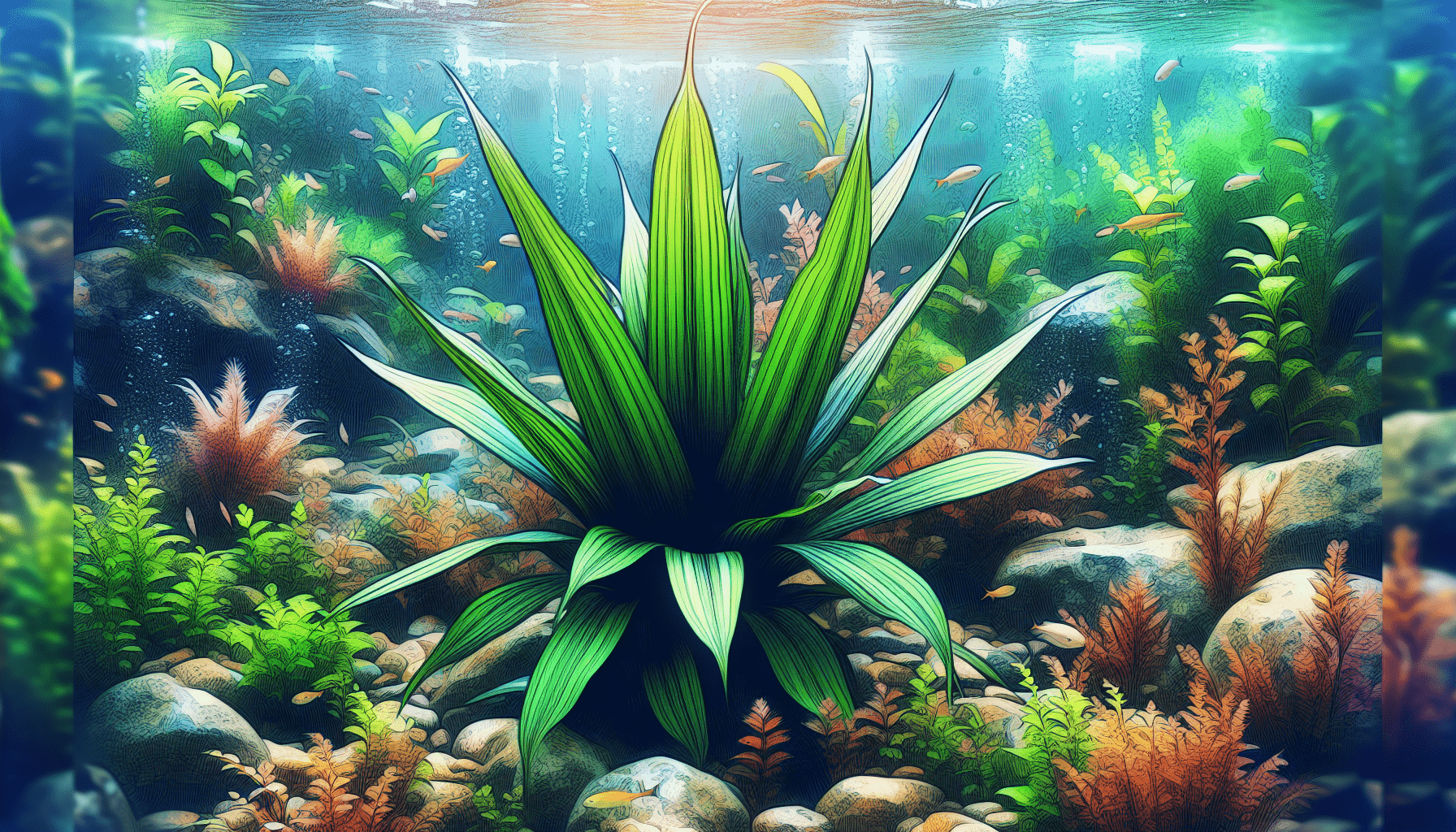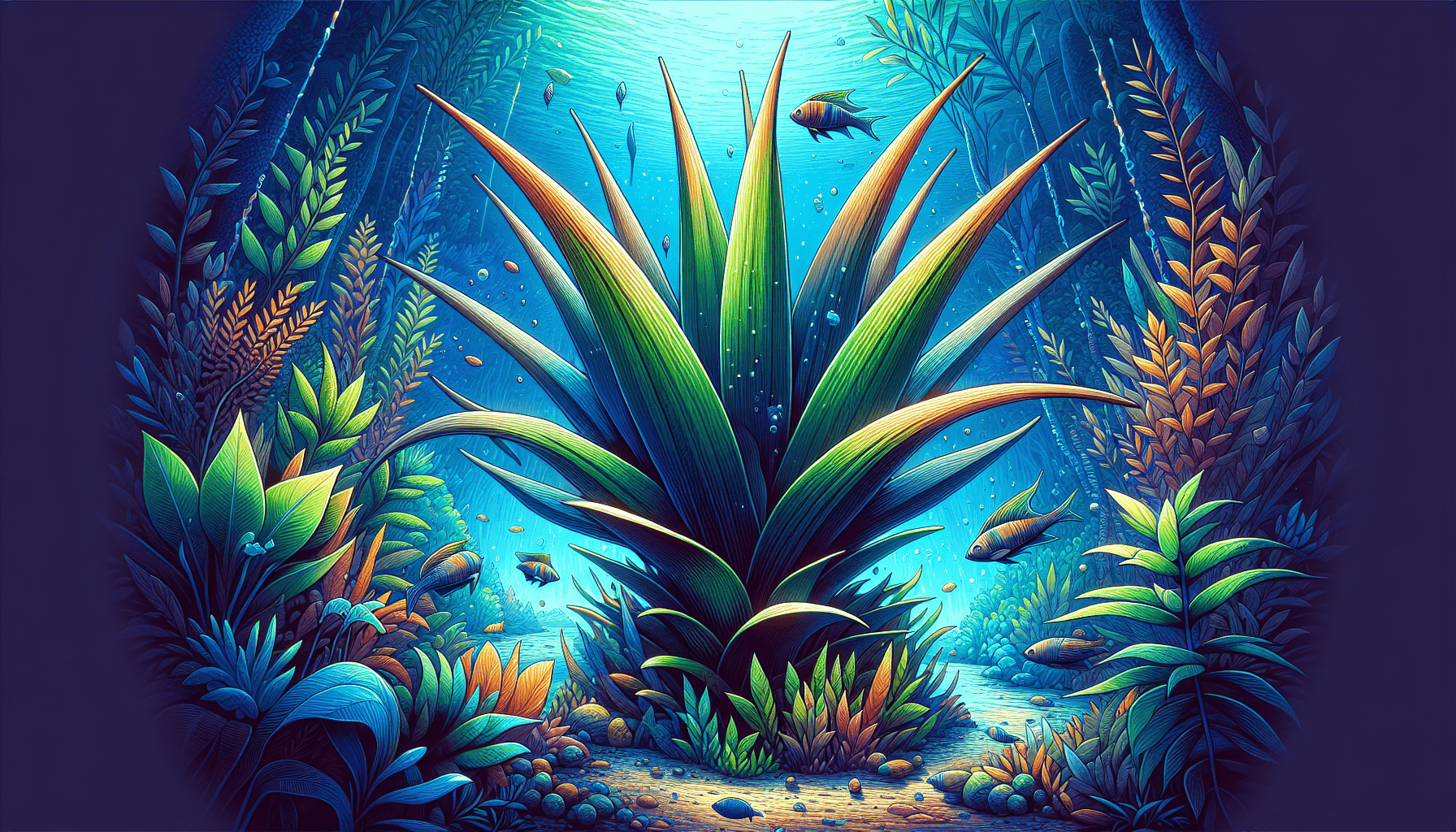As an esteemed reader with an interest in the aquatic environment, you may appreciate a detailed examination of one particular inhabitant of these ecosystems, namely the sword plant. This engaging and thought-provoking article aims to enhance your understanding of this distinctive aquatic plant. It explores its taxonomy, essential properties, preferred habitat, and its unique attributes that make it a crucial component of aquatic biodiversity. Whether you are a seasoned botanist, a novice aquarium enthusiast, or simply someone intrigued by the depth of nature’s intricacy, you are destined to acquire valuable insight about this fascinating water dweller called the sword plant.

Overview of Sword Plant
General Definition
The Sword Plant refers to a group of popular aquatic plants extensively used in aquariums and aquascape designs. Recognized for their vibrant leaves in various shades of green, sword plants provide a lush backdrop in aquatic habitats, and are appreciated for their versatility and ease of care.
Classification and Taxonomy
Scientifically, sword plants belong to the Echinodorus genus, within the Alismataceae family. This genus comprises about 28 known species varying in size, leaf color, and other defining attributes. Given their close relationship with members of the Alismataceae family, such as Sagittaria and Vallisneria, they’re often compared in terms of morphology and habitats.
Common Names and Species
Numerous species under the Echinodorus genus are recognized. Of these, the most prevalent and popular include Echinodorus amazonicus, Echinodorus bleheri, and Echinodorus parviflorus. Most of these plants are collectively referred to as “sword plants” based on their long, broad, sword-like leaves, but specific species might also have nicknames like Amazon Sword, Oriental Sword, or Small-Leaf Sword.
Features and Characteristics
Leaf Shape and Color
The broad, sword-like leaves are a predominant feature of sword plants, hence their name. Ranging in hues from light to dark green, these leaves can achieve stunningly vibrant colors if properly nurtured. Their shape varies with species, but generally, they exhibit an extended ovoid shape tapering to a point, resembling a sword blade.
Size Dimensions
Sword plants can vary widely in terms of size, largely depending upon their species. While some remain fairly petite, others can grow to sizable dimensions—reaching up to 20 inches or more in height and spreading out broadly.
Root System
Sword plants are renowned for their robust root system, aiding them in nutrient uptake and providing stability in the substrate. This strong rooting structure also supports their ample vegetative growth above the water surface.
Flower and Seed Production
In appropriate conditions, sword plants can produce small, white flowers on tall stalks rising above their foliage. Following pollination, these flowers subsequently produce seeds that drop into the water, providing the potential for reproduction.
Habitats and Distribution
Geographical Locations
Native to the American continents, sword plants thrive in a variety of aquatic ecosystems spanning from North to South America. They are particularly prevalent in the Amazon basin’s warm, tranquil waterways.
Preferred Aquatic Conditions
Sword plants do well in sluggish or still waters, making them ideal for aquarium conditions. They can accommodate a range of water chemistry parameters, but typically prefer soft to moderately hard water with a slightly acidic to neutral pH.
Natural Environment
Their natural habitat encompasses everything from marshes to riverbanks and even underwater locales. Sword plants are often submerged in these shallow, slow-moving water bodies, although they can also adapt to emersed conditions.

Cultivation and Care
Planting Requirements
Sword plants require a nutrient-rich substrate to support their dense root system and to obtain crucial nutrients. They thrive under medium to high light levels and do well with the addition of a CO2 supply to facilitate photosynthesis, but can survive with less of each.
Water Requirements
Being aquatic by nature, sword plants demand a substantial amount of water. Although they can tolerate a range of water parameters, they tend to prefer slightly soft to moderately hard water with a pH between 6.5 and 7.5.
Lighting Requirements
Lighting levels will significantly impact sword plants’ growth, with inadequate lighting leading to limited photosynthesis and growth. Nonetheless, they are relatively adaptable and can manage their growth even under medium level lighting.
Temperature and pH preferences
The sword plant can adapt to a generous range of temperatures, from 60 to 82 degrees Fahrenheit. However, an optimal temperature lies somewhere between 72 and 78 degrees Fahrenheit for most species. Similarly, the sword plant can handle a wide pH range, from 6.0 to 8.0, but tends to prefer a more neutral environment.
Reproduction and Growth
Life cycle
Sword plants are perennial species, meaning they continue to grow year-round in suitable conditions. They follow a simple life cycle—growing from seeds, maturing, and producing flowers and seeds in subsequent phases.
Propagation Methods
Typically, sword plants propagate through a process known as vegetative propagation. New plantlets form on a stem called a runner, which extends from the mother plant. Once the plantlets develop roots and leaves, you can separate and replant them individually.
Growth Rate
Sword plants exhibit a moderate to fast growth rate, depending on conditions. Adequate lighting and nutrients can promote faster growth, but even without optimum conditions, they will usually continue to grow at a slower pace.
Common Uses of Sword Plant
Aquarium Planting
Given their adaptability and aesthetic appeal, sword plants are widely popular for aquarium planting. They provide excellent habitat structures for fish and other aquatic creatures, helping replicate a species’ natural environment within the aquarium.
Ponds and Water Gardens
Sword plants are also extensively used in designing ponds and water gardens. Their vivid green foliage provides a captivating contrast against the water and can help create an immersive aquatic landscape.
Aquascape Designs
Whether as a background entity in smaller tanks or solitaire plants in larger areas, sword plants significantly contribute to aquascapes’ aesthetic charm. Their alluring leaf structures and soothing green tones add depth and richness to any design.
Potential Issues and Troubleshooting
Common Pests and Diseases
Like any living organism, sword plants may also fall victim to certain diseases and pests. They could suffer from rot, fungi, or bacterial infections triggered by suboptimal conditions. Algae can also attach to their leaves, inhibiting sunlight access and hampering growth.
Nutrient Deficiencies
Sword plant complicate with nutrient deficiencies that may lead to impaired growth and discoloration of leaves. Iron deficiency is particularly common, causing leaves to turn yellow—a condition known as chlorosis.
Deterioration and Browning of Leaves
Browning and deterioration of the leaves attributed to several issues, including inadequate lighting, improper water temperature, or lack of nutrients. Root rot due to overwatering is another common problem leading to discoloration and eventual decay of the leaves.
Environmental Impact
Ecological Benefits
In their natural habitats, sword plants play a crucial role in providing shelter and food for various aquatic species. Additionally, their deep rooting system helps prevent soil erosion along riverbanks and marshes.
Potential Invasive Behaviour
Although they offer several benefits, sword plants can also become invasive if introduced into non-native environments. Their rapid growth potential, facilitated by their vigorous reproduction, may out-compete native plant species and disrupt ecosystem balance.
Impact on Fisheries and Native Plants
Unregulated proliferation of sword plants in non-native habitats could obstruct waterways, affecting fisheries and other water-related industries. They might also crowd out local plant species, often causing ecological imbalance.
Interesting Facts and Trivia
Historical Uses and Symbolism
Historically, sword plants have been cultivated for their aesthetic appeal and their alleged medicinal powers. Some cultures also associate them with various symbolic notions, such as strength and protection, owing to their sword-like leaves.
Famous Varieties and Hybrids
There are several famous varieties and hybrids of sword plants, including the ‘Oriental Sword,’ celebrated for its fiery red leaves, and the ‘Amazon Sword,’ acclaimed for its robust growth and grandeur.
Record Holders
Some species of sword plants are record holders in terms of their size. For instance, the Echinodorus grandiflorus is known to produce leaves up to 35 inches in length, marking one of the most extensive specimens among aquatic plants.
Conservation Status and Threats
Status on International and National Conservation Lists
Most species of sword plants are not currently listed under the International Union for Conservation of Nature (IUCN). In local contexts, some regions may have them on watch lists due to their invasive potential or breeding habitats being under threat.
Threats From Pollution and Habitat Loss
Sword plants face significant threats from water pollution and habitat loss. Nutrient pollution can result in excessive algal blooms, choking off the sword plants. Similarly, rampant deforestation and conversion of wetlands into agricultural or urban regions pose serious threats to their habitats.
Efforts and Strategies For its Conservation
Conservation strategies for sword plants primarily involve preserving their natural habitats and curbing water pollution. Monitoring their trade as aquarium plants can also be important to prevent their unregulated introduction to non-native habitats. Cultivating sword plants responsibly in aquatic gardens and aquariums reduces demand for wild specimens, contributing indirectly to their conservation.